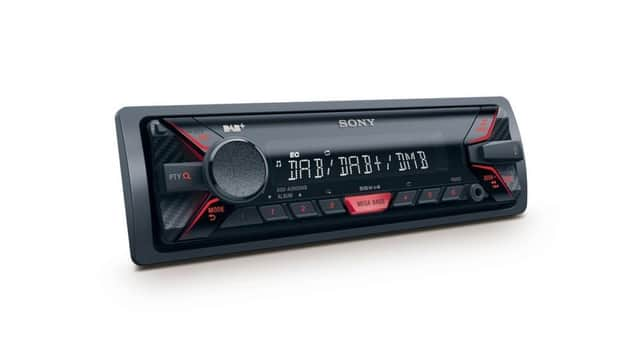Time to finally ditch the CD player in your car


It used to be a ritual, when changing cars, to transfer one’s library of music, either scattered randomly or placed carefully inside the plastic sleeves of a zip-up wallet, into the new one along with the picnic blanket and a bag of tools from the boot.
But the chances of your next vehicle coming with anything on the dashboard that can play your discs are diminishing by the month. And an upgrade to the stereo in your present car may also involve consigning them to the recycling bin.
Advertisement
Hide AdAdvertisement
Hide AdThe fact is that car CD units are going the way of cassette and eight-track players before them. There are still plenty on the market, but you will now have to pay around £20 extra just for the privilege of backwards-compatibility.
The basic in-car unit today has an FM tuner that can interrupt Radio Four with traffic bulletins, and a USB port into which you can plug your phone – but no CD slot. A top-of-the-range unit adds Bluetooth, a touch screen, and full connectivity with your phone, but still no disc player.
The move from physical to digital music does not, of course, mean that you must limit your listening. On the contrary, it opens up a new world of possibilities – but only if you have already digitised the music you play most.
Sony, Pioneer and the other principal makers of car stereos all work on the assumption now that you will have accumulated a library of MP3 music files some time ago, and their latest players make it easy to access them, no matter where they are. If you store them on your phone, you can plug it right in and play them through the car’s speakers, while at the same time charging the handset. If they’re on a hard disc, you can transfer them to a USB stick and plug that in instead.
Advertisement
Hide AdAdvertisement
Hide AdYou can also stream music that you don’t own, using a service like Spotify, with which even the most basic of today’s in-car units are compatible. However, you will need a subscription and a mobile signal on your phone.
Dedicated MP3 players are less prevalent now than they were a decade ago, but they remain compatible with car units. Apple’s current iPod Touch, which starts at £200 and is more or less an iPhone minus the actual phone, is a perfect companion – as is an iPhone itself.
How you choose to physically connect your phone to your car is largely a matter of preference. Bluetooth, if your stereo supports it, is the most convenient but also the most draining on your battery, and some Android phones are better than others in maintaining connectivity. A USB lead is more secure but does not allow hands-free calling and is of little use if the music is being controlled by a back-seat passenger.
Many car units also allow connection via an audio mini-jack lead, but you should use one only if your source has no USB port.
Advertisement
Hide AdAdvertisement
Hide AdAround £40 is the starting price today for a decent, standard-size dashboard unit, and it will come with all the features of the more expensive CD version, except the disc player itself – so the upgrade makes little sense. All of which means you can finally reclaim your glove box for your gloves… and the stash of USB cable you’ll now need to have handy.